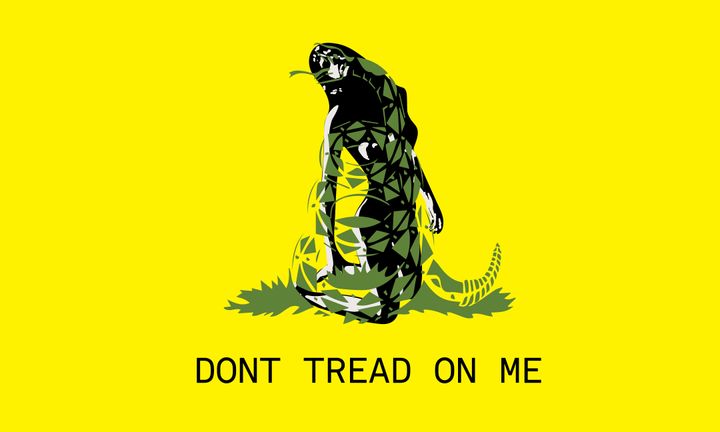
WhiteBox and Wallplay are pleased to present Natalie White for Equal Rights, an interactive multimedia solo exhibition by Natalie White. Dedicated to raising awareness for the ratification of the Equal Rights Amendment (E.R.A), the show promotes the need for inclusion.
The exhibition serves as a launching platform for a two week march from New York City to Washington, DC, to raise awareness of the Equal Rights Amendment with the mission of educating people about the issue along the way.
From July 8-23, 2016, Natalie White For Equal Rights will be leading a march from New York City to Washington, DC in protest of the lack of ratification of the Equal Rights Amendment.
Help cover the expenses for the March to DC. Independently, $20,000 have been raised towards the total budget of $45,000. You can help too and make this march possible and an unforgettable milestone for women in the United States! See her Indigogo campaign and support by clicking here.
The United States is only one of seven countries in the world along with Iran, Somalia, Sudan, South Sudan, and the two Pacific Island nations Palau and Tonga that have not ratified the UN Convention on the Elimination of All Forms of Discrimination of Women (CE- DAW). Known as the International Bill of Rights for Women, CEDAW has been signed and ratified by 187 countries, virtually every other country on Earth. This fact is what inspired White to dedicate her life to getting the E.R.A passed, raising awareness through her art.
“THE VIETNAM WAR ENDED IN PART BECAUSE ROCK AND ROLL MUSIC BROUGHT ATTENTION TO THE ISSUE AND A CALL FOR PEACE WAS TRANSMITTED THROUGH ART. THE CIVIL RIGHTS MOVEMENT WAS SPEARHEADED BY POETS AND ACTIVISTS CALLING OUT THEIR LEADERS. I AM AN ARTIST– IT IS MY DUTY TO HELP STOP CENTURIES OF DISCRIMINATION AGAINST WOMEN. EVEN IF IT’S NOT CONVENIENT OR EASY, IT MUST BE DONE,” SAYS WHITE.
Natalie White for Equal Rights features White’s self-portrait double exposure oversized polaroid images in red, white and blue. A bronze sculpture of White, nude in combat boots holding the American Flag is the centerpiece of the exhibition. The underground exhibition space will feature an interactive study with books on the Constitution, a timeline of the history of the E.R.A and information on steps that can be taken to get it passed. A series of propaganda flags will be shown, “Sons of Liberty, Defend the Republic” will alternatively read, “Sisters of Liberty, Demand Equal Rights”. Moreover, instead of the original flag in which the rattlesnake is sliced into pieces that originally represent the states of the Colonial America, White’s redefined flag will have abbreviations of the states that have yet to ratify the E.R.A.

The Equal Rights Amendment (ERA) is a proposed amendment to the United States Constitution that would expressly prohibit discrimination against girls and women on the basis of gender. The Constitution currently does not guarantee equal rights for women. In her work, Natalie White advocates for a more progressive legislature, rooted in the fact that economic inequality, pregnancy dis- crimination, violence against women, and other forms of discrimination against women and girls are pervasive and leave women without effective legal recourse. State laws are not uniform and federal laws are not comprehensive. Moreover, these laws can be, and in some cases have been, rolled back at any time.
Natalie White is a provocative and progressive feminist artist, best known for her self-portrait work in giant polaroid photogra- phy and her contributions as a “muse” to the work of many of to- day’s art and fashion luminaries, such as George Condo, Olivier Zahm, Will Cotton, Spencer Tunick, and Sean Lennon. “Feminist by nature, riot by habit”, Natalie White is a leader in advocating for female empowerment and self-a rmation through art. Born in 1988 in Fairmont, West Virginia, White rst gained attention inter- nationally as a young model. She is notably the rst American ever to be featured in French Playboy. Reclaiming the objecti cation of her body as her own art in 2013 at Who Shot Natalie White, a retro- spective from twenty ve artists for whom she had been a muse, White debuted herself as a solo artist. She also has performed at the Art Basel Miami Women in Art bene t in collaboration with the Brooklyn Museum’s Elizabeth Sackler Center.

Laura O’Reilly, founder of Wallplay, curated the first installment of Natalie White for Equal Rights entitled “Instant Gratification”, in September 2016 at Wallplay’s store-front project space in The Hole. The installation featured a daily performance piece by White, topless and enclosed in a plexiglass box in the front window with a sign stating that the E.R.A had never been passed, a fact which most women walking by were not aware of. Natalie White for Equal Rights is a platform and exhibition produced with the aim of bringing wit and enjoyment to the daunting process of instigating policy change.
White’s exhibition at WhiteBox will serve as a launching platform for a two week march from New York City to Washington, DC in protest of the lack of ratification of the Equal Rights Amendment. Feminists of all genders, age, religion and race are invited to participate. There will be two stops a day in various cities and towns along the way. The concluding stop of each day of the March For ERA will feature festive speeches, a concert and collaborative art installations. Participants will stay and rest at community centers, rock & roll tour buses and campgrounds. Once the March reaches DC, there will be a final protest asking Congress to pass the E.R.A and send it to the states for ratification.
Natalie White and WhiteBox are raising money for the march through donations channeled through Whitebox, a 501 c3 organisation, as well as crowdsourcing on kickstarter and donations through art sales from the exhibition.
The Equal Rights Amendment (ERA) is a proposed amendment to the United States Constitution that would expressly prohibit discrimination against girls and women on the basis of sex. The Constitution does not guarantee equal rights for women. As Supreme Court Justice Antonin Scalia has stated:
“CERTAINLY THE CONSTITUTION DOES NOT REQUIRE DISCRIMINATION ON THE BASIS OF SEX. THE ONLY ISSUE IS WHETHER IT PROHIBITS IT. IT DOESN’T.”
The ERA was passed by Congress in 1972: “Equality of rights under the law shall not be denied or abridged by the United States of by any state on account of sex.” By the time the deadline for state ratification ended in 1982, 35 states had ratified the amendment, just three states short of the number needed to put the ERA into the Constitution. Since then, the ERA has been reintroduced in Congress every session. Although polls indicate that more than 90% of Americans support the ERA, Congress has not once voted on it over the past thirty years.
The ERA is an important statement of principle. The Constitution embodies the nation’s core values. Equality between women and men is a fundamental human right that should be guaranteed in the Constitution.
Sex discrimination continues to limit equal opportunity and justice for women. Economic inequality, pregnancy discrimination, violence against women, and other forms of discrimination against women and girls are pervasive and leave women without effective legal recourse. State laws are not uniform and federal laws are not comprehensive. Moreover, these laws can be, and in some cases have been, rolled back anytime.
The Equal Protection Clause of the Constitution does not protect women from sex discrimination. The Fourteenth Amendment provides equal protection of the law, but it has been interpreted to require state action and the intent to discriminate. Much discrimination occurs through private action and is not intentional, making intent hard to prove. The Supreme Court reviews sex discrimination claims using intermediate rather than strict scrutiny, a lower standard of review than for racial and religious discrimination claims.
For more information about the ERA, click here.

